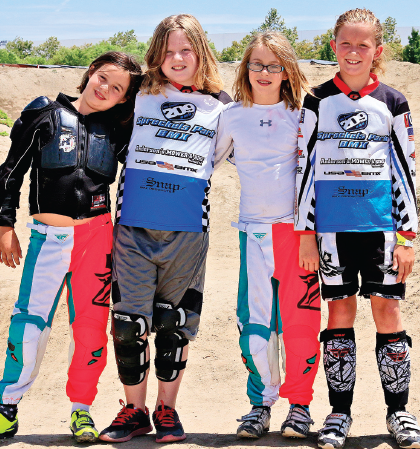It’s been a long year for Jon Anderson.
On one hand, as the owner of Anderson’s Mower and Bike in Manteca Jon Anderson has done more business during the pandemic than at any other time during the store’s 46-year run – spurred, no doubt, by people looking for something fun and safe to do during the quarantine period and the resurgence of bicycling as an acceptable activity for young people.
On the other hand, he’s been largely without one of the things that has been a focal point of his life since he first discovered it in the mid-1970’s – racing.

It’s a track that took nearly a decade to see come to fruition, and while it seemed like the closure would go on forever, the fact that people are getting the chance to get back out on the track once again has given Anderson a renewed sense of hope – and solidified his dedication to keeping the sport that be loves, BMX, alive and well in the Central Valley.
“One of the things that we’re proud of is that it’s open to the public and it’s a city park – it’s something that everybody can come down and use,” Anderson said. “It’s one of those things where you just have to turn it over to the public and let them do what it is that they want with it. With everything that is going on in the world right now, it’s really something that’s unique and hopefully it’s something that’s around for a long time.”
The idea for the park came around 1999 when it was announced that the BMX Track at Rainbow Fields in Riverbank would be closing up shop permanently, and rather than being forced to drive more than an hour to ride, Anderson approached Willie Weatherford about the possibility of installing a track at a local city park.
While the wheels of government turn slow, Anderson was able to make Weatherford a believer – and gain the support of other elected officials like Jack Snyder and Vince Hernandez. It wouldn’t be until local developer Mike Atherton got on board that the wheels really started turning.
It was Atherton’s generosity in selling the parcel of land that the track now sits on to the City of Manteca for only $1 that opened the door to the Manteca BMX Track, but it would take even more work on the part of Anderson to get to the point that it was suitable and ready for racing.
“It took a while for us to get through all of the hoops needed once the track was built because of the insurance that was needed,” Anderson said. “It ended up taking more than a year, but we were finally able to get everything in order and open it up to the public.”
And it hasn’t been all smooth sailing in the more than a decade that the park has been open to the public and the wider, close-knit BMX community.
For one thing, the track sits in a storm basin – meaning that when heavy rains come, most of the track ends up under three feet of water. The recent renovations completed at the track have made it withstand the elements a little bit better, but the massive quantities of water that pour into the basin mean that there is more work that needs to be done each and every time mother nature decides to throw a wrench into the equation.
And then there are the thieves.
There were dozens of bikes that were kept on-site to host beginners’ clinics and give young people the chance to learn about BMX, but thieves that broke into the on-site container made off with more than a few of them – as well as the customized starting system needed for actual BMX competition.
The box is now alarmed and notifies Anderson anytime that somebody tries to gain access, and more than once he’s made it down there to the track before those that had attempted to steal got away with what they came for.
“That time, which was on 4th of July, they probably made off with around $8,000 to $10,000 worth of our stuff,” Anderson said. “It’s an ongoing battle – them cutting the gate and getting down inside to try and get what is locked up – so when I see them out there trying to set up camp, I get rid of them as soon as I possibly can.”

It was with his father, known affectionately as “Andy,” that Anderson first got a taste of BMX by traveling around to races at King’s BMX in Modesto and Delta Raceway in Stockton around 1975 – in the infancy of a sport that decades later would gain mainstream acceptance and be added to the slate of new additions to the Summer Olympics.
And while his days of riding competitively at that level were long behind him, Anderson still got a chance to be a part of the history of the sport when it came to the Olympics – even if it was in an unconventional way.
According to Anderson’s wife Cathy – who he credits for helping see the longstanding goal of having a track in Manteca through to where it is today – the first Olympic BMX gold medalist, Latvia’s Maris Strombergs, won using a sprocket manufactured by Lathrop-based Snap BMX, which is owned by Anderson and his business partner.
While he would love for the exposure that the Olympics have given BMX to generate an entirely new generation of riders who aspire to reach those same heights, he would also be happy with more kids just enjoying all that there is for BMX to offer – even if that never means reaching the competitive level.
“I just want to see young people develop a passion for cycling,” Anderson said. “It doesn’t matter where it comes from – it’s just a matter of getting there to that point.”





